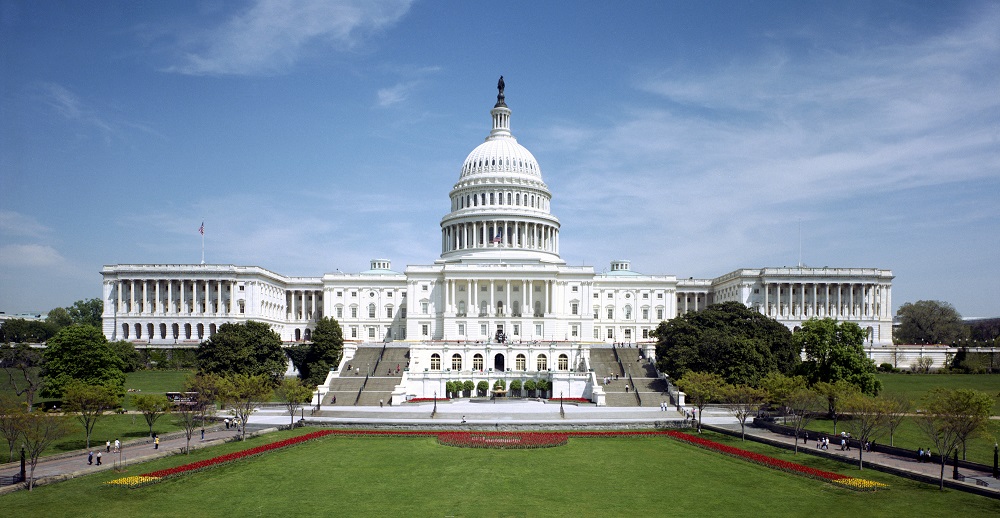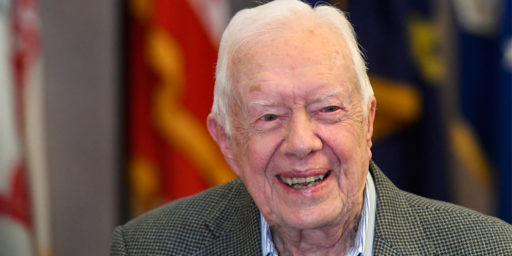What’s the Pattern for Senate Seats in Mid-Terms?
Looking at past Senate elections and some more thoughts on historical patterns.

A couple of days ago I looked at the pattern of seat loss (and rare gain) by the president’s party in the House during the mid-terms (which is usually where these discussions focus). But what about the Senate?
It looks likely that the Democrats will end up with +1 (or, perhaps, +0).
So how does that figure into the historical mix?
Returning to UCSB’s American Presidency Project, we find the following:
| Senate | ||
| Nixon | 1970 | +2 |
| Carter | 1978 | -3 |
| Reagan | 1982 | +1 |
| Bush 41 | 1990 | -1 |
| Clinton | 1994 | -8 |
| Bush 43 | 2002 | +2 |
| Obama | 2010 | -9 |
| Trump | 2018 | +2 |
Note that in the corresponding House races, the president’s party lost seats, except in 2002 (with an average loss, not counting 2002, of 30.9 seats).
So, in terms of historical context, the Senate outcome on this metric is not outside historical patterns in the least.
Of course, Senate contests are very different given that only one-third of the chamber is up for reelection in a given cycle and the partisan make-up of the states in question can very much influence the possibilities.
It is worth noting that the Democratic losses in 2010 were not only part of a general anti-Democratic wave (we were still dealing with the Great Recession and the party lost 63 House seats) it is worth noting that 2008 was an especially good year for the Democratic Party (including a brief filibuster-proof majority in the Senate). The 2010 mid-terms were a great example of the bigger they are the harder they fall.
Also noteworthy: 1994 was the Republican Revolution.
At any rate, any claims about the Senate contests being of “historic” proportions would be incorrect. This outcome, whether is it +1 or 0, is well within expected norms.
The “historic” issue is going to be based on the House. It would seem that at a minimum the president’s party will lose fewer seats than the pattern suggests and there is still the outside chance that Biden’s party will retain control of the Chamber, which would put 2022 in the “historical” column–although not as anomalous at FDR and Bush in gaining seats at the first mid-term (which I think is still mathematically possible but seems especially unlikely). The Democrats have 222 seats in the current Congress and 218 are needed for majority control of the next (so they can both lose seats, fitting the normal pattern, and still retain control). (Again, I will remind everyone that the map upon which the House candidates are competing was always going to be close, barring something highly unusual).
Historical side-note: Clinton was the first president to have his party lose control of the House since Truman in 1946, since Democrats controlled the chamber from 1955 to 1995. So while JFK, LBJ, and Carter all lost seats in the House in their mid-terms, they did not lose control of the House.




I think that’s the key point: the Senate in any cycle is much less reliable than the House in reflecting how well a party is doing nationally. For example, in 1986, Reagan was extremely popular (Iran-Contra wouldn’t become public until after the election), and the Republicans only lost 4 House seats. But they got absolutely crushed in the Senate elections and lost control of the chamber. A lot of that had to do with their big wins in 1980 being up, rather than any sort of national backlash against the GOP.
It also helps explain why Republicans expanded their Senate majority in 2018 amidst a “blue wave.” It just happened that the Senate map was very favorable to Republicans that year, with a bunch of Democratic incumbents in very red states and almost no Republican incumbents in blue states (the closest example was Dean Heller in purplish Nevada, who did in fact go on to lose his seat). In fact, it’s impressive the Dems did as well as they did–they successfully defended several red-state Senators (Joe Manchin, Jon Tester, Sherrod Brown) as well as the ones in PA, MI, and WI, and they flipped Republicans seats in NV and AZ.
You can never look at Senate gains or losses in isolation, you have to determine which seats are up, which often will provide benefits to either of the parties regardless of the national mood of the electorate.
Earlier this week I was cautioning people about celebrating too early, as the Dems were in danger of losing both the House and the Senate, and losing by a nose is still losing. Only in gambling can you come out ahead by losing by beating the spread. The loss of the Senate would have been very consequential as it’s safe to say that not a single judge would be confirmed by a Republican Senate. I am very happy that, in the event, we did hold the Senate after all.
But now I would also put out the same caution as Steven does above, this time on the positive side. It may be very unlikely that we hold onto the House, but it is not yet certain that we won’t. And, while not as consequential as the Senate, holding onto the house helps the Democratic agenda. If the Republicans take it, House leadership and House Committee leadership will have no agenda other than to attack Joe Biden and bring him down in any way they can imagine. Remember they have no legislative goals. There is nothing to negotiate with them. So we should hold out hope they don’t take the House for as long as we can.
As for the wishful thinking that the Dems are better off not having control of such a closely divided house, well, that’s just piffle. (Excuse my language.)
Also noteworthy: 2002 was post 9/11 and pre Iraq invasion. I don’t know about anyone else, but I was so pissed at Jean Carnahan, I cast no vote in that race. Ding me all you want, my sons were 16 and 14 and very much at risk* in that stupidity.
*if you’ve ever had a teenager, you know they don’t listen to their parent. I sure as shit never did.
Oh, I don’t know, depends on how many shares you have in Orville Redenbacher.
@OzarkHillbilly:..I sure as shit never did.
I was a senior in High School in January of 1966 when I turned 18 and went to the Selective Service Office in the basement of the Harvey, Illinois Post Office to register for the draft. Since I was still in High School I got a deferment. I clearly remember one of the women in the office saying “I hope they don’t get you.”
All the seniors in my class, girls and guys took the Air Force Aptitude Test (I think that is what it was called.) I don’t remember what my score was but it was very good. After I graduated I figured I should go see the Air Force recruiter about enlisting. Somehow I thought it would be better than being drafted into the Army. I took my test results to the Air Force recruiter in the same basement of the same Post Office in Harvey, Illinois. He looked at the sheet and said: “With scores like this you should go to college.” I said something about how I thought enlisting in the Air Force would be better than getting drafted. He told me to go to college for a year and if I still wanted to enlist to come back and he would sign me up. That’s just what I did. After one year of Junior College I went back. The same recruiter was there. I brought my test scores with me in case he forgot who I was.
Before he signed me up he asked me if I had told my parents. I had not. He told me to go tell them first and then come back.
When I told my dad, a WWII Navy Veteran and a supporter of the Vietnam War he said: “We don’t want you to do that. You will come home in a coffin.”
I listened to him. Never went back to the Harvey, Illinois Post Office.
He may well have saved my life.
Fortunate Son
@Mister Bluster: The “AF” stands for “Armed Forces.” Students still take the test today. I got a lot of late invites from various universities saying *it’s not too late to come to our school if you want to major in engineering* because I scored in the 99th percentile on some obscure math test in the battery. Some even offered some scholarship money. If I’d only wanted to sit at a desk and do math problems all day, I’d have been set. [sigh…]
@Mister Bluster: “When I told my dad, a WWII Navy Veteran and a supporter of the Vietnam War he said: ‘We don’t want you to do that. You will come home in a coffin’.”
WA! I had no idea that sending other people’s kids to water the Tree of Liberty with their blood had such a long history. Although I probably should have realized it when I read about Averil Harriman advising a graduating class at Yale that they were too important to the nation to serve in the military at the time of WWII.
@Just nutha ignint cracker:..AF..
The test I took was not abbreviated AF. It was spelled out Air Force. That’s why I went to the Air Force recruiter instead of the Navy recruiter.
@Just nutha ignint cracker: @Mister Bluster: We took the ASVAB (Armed Services Vocational Aptitude Battery) as high school juniors, I believe. I got non-stop calls from recruiters and could have, as a classmate did, gone into the Navy’s nuclear program with a huge-in-those-days $40,000 signing bonus. I went the college/commissioning route instead.
@James Joyner:..non-stop calls…
Despite any test scores the only letters guys of my age got in 1966 were from the draft board.